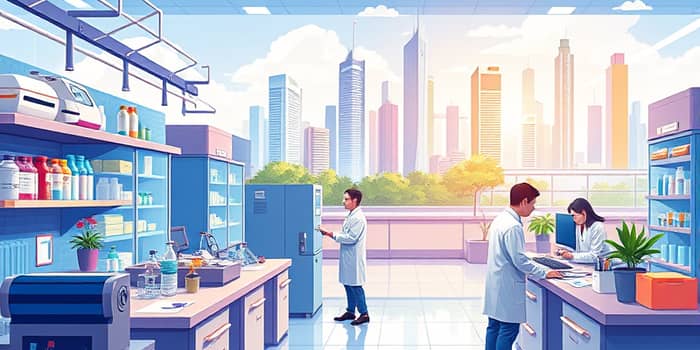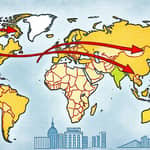
The pharmaceutical industry has become a powerful engine of economic expansion, driving investment, jobs, and technological breakthroughs. By exploring its multifaceted impacts—from global GDP contributions to local cluster development—we can understand how innovation fosters sustainable regional growth.
Pharmaceuticals contributed USD 2,295 billion to global GDP in 2022, marking a remarkable 25% increase since 2017. This sector directly employed 7.8 million people worldwide and supported a total of 67.1 million jobs through indirect and induced effects. For every direct pharma job, the industry supports 8.54 additional jobs across diverse sectors, illustrating its extensive supply chain ripple.
Research and development (R&D) activities further amplify economic value. In 2022, pharmaceutical R&D employed over 1 million people and contributed more than USD 227 billion to GDP. Such investment underscores the industry’s capacity to generate high-skilled positions and sustain broader employment.
Technological breakthroughs are redefining drug discovery and delivery. By 2025, artificial intelligence (AI) is expected to drive 30% of new drug discoveries, reducing costs and accelerating personalized treatments. This shift not only lowers barriers for novel therapies but also tailors interventions to individual patient profiles.
mRNA technology, propelled by pandemic-era successes, is expanding into new therapeutic areas like oncology and rare diseases. Startups and established companies alike are harnessing this versatile platform to pioneer vaccines, protein therapies, and gene-editing agents.
The pharmaceutical supply chain is a complex network of raw material providers, equipment manufacturers, clinical service firms, and distributors. Each link in this chain generates employment and fuels related industries such as logistics, packaging, and software development.
Employment multipliers highlight the sector’s expansive reach. In OECD countries, pharmaceutical firms directly employ over 1.2 million people, with nearly half a million in the United States alone. Switzerland, Slovenia, and Denmark each allocate around 0.8–0.9% of their national workforce to this industry, demonstrating its significance in high-income economies.
Moreover, the sector fosters high-skilled employment in research and manufacturing, attracting talent through competitive salaries and world-class facilities. This creates a virtuous cycle: skilled professionals drive innovation, which in turn demands more expertise.
Pharmaceutical clusters act as catalysts for regional prosperity. When companies and startups co-locate, they benefit from shared infrastructure, knowledge spillovers, and a skilled labor pool. Local universities and research institutes often partner with firms, further enhancing discovery pipelines and workforce development.
These clusters boost ancillary services such as legal consulting, financial advisory, and real estate, broadening the economic base. Increased tax revenues allow municipalities to invest in public amenities, strengthening community engagement.
Despite its growth, the pharmaceutical sector faces patent cliffs, R&D budget pressures, and regulatory complexities. Policy turbulence and macroeconomic instability can disrupt investment cycles, especially in emerging biotech firms.
To navigate these challenges, companies and governments leverage both push incentives like grants and early-stage funding and pull incentives such as market rewards for successful innovation. Research suggests a combination of push and pull incentives is most effective in sustaining long-term breakthroughs and aligning public health goals with industry priorities.
Additionally, firms are adopting flexible R&D models, including open innovation partnerships, virtual trials, and modular manufacturing units. These strategies enhance resilience and accelerate time-to-market for critical therapies.
As the pharmaceutical industry advances, its ability to spur regional growth will depend on collaboration between industry, academia, and policymakers. Investing in education, infrastructure, and regulatory frameworks will ensure that innovation continues to drive economic prosperity.
By championing both technological progress and community engagement, pharmaceutical companies can create shared value—delivering breakthrough medicines while fostering fostering regional economic resilience. The result is a healthier population and vibrant local economies equipped for future challenges.
References













